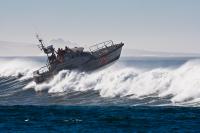
47′ Motor Lifeboat
It takes a special breed of sailor to attempt to crest the monstrous waves of a harbor bar in a motor lifeboat. It also takes a very specially designed and built boat to make crossing the bar possible. We recently reviewed the movie, “The Finest Hours,” which told the story of the what is considered by many to the greatest small boat rescue in history. In 1952, coxswain Bernie Webber with a crew of three took CG-36500, a 36-foot motor lifeboat, across Chatham bar in a winter Nor’easter to rescue the crew of the T2 tanker SS. Pendleton, which had broken in half in the storm.
When large ocean swells hit sand bars at a harbor entrance, the resulting breaking waves can rise to monstrous heights. Most fishermen and other boatman stay in port. When a ship or boat is in danger offshore, however, the Coast Guard has no choice but to go out and in many cases, a motor lifeboat is the only way to get the job done. The boats are designed to be self-righting and to survive the worst the sea can throw at them. A brief overview of these amazing boats.
Continue reading

 In a
In a  We
We 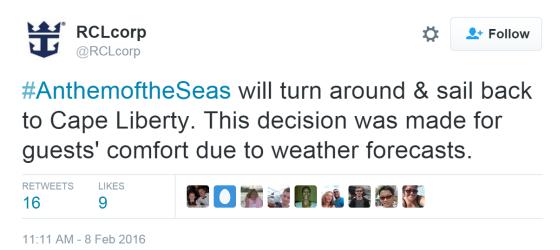
 The winter storm that struck Royal Caribbean’s
The winter storm that struck Royal Caribbean’s  Yesterday, we posted
Yesterday, we posted 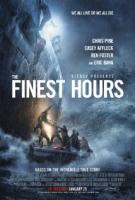 “
“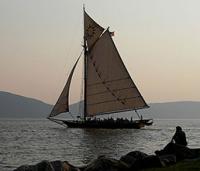 We
We 
 On February 3, 1943, the troopship
On February 3, 1943, the troopship 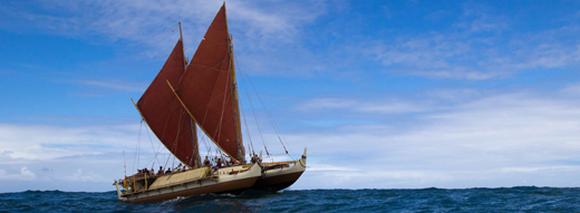 Hōkūleʻa
Hōkūleʻa Hawaii 2
Hawaii 2 In the late 60s and early 70s, hovercraft ferries were the ships of the future.
In the late 60s and early 70s, hovercraft ferries were the ships of the future. 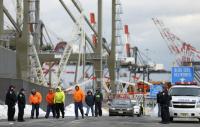 On Friday, more 4,000 longshoremen walked off the job shutting down piers and container terminals in New York and New Jersey.
On Friday, more 4,000 longshoremen walked off the job shutting down piers and container terminals in New York and New Jersey.  If you are in the New York area come help celebrate Lilac, America’s only steam-powered lighthouse tender at a Maritime Mardi Gras fundraiser on Fat Tuesday, February 9th from 6 – 8 PM on 79 Walker Street on the 6th floor, (one block south of Canal between Layfatte and Broadway), in Manhattan. Let the good times roll with cocktails, light appetizers, and a silent auction.
If you are in the New York area come help celebrate Lilac, America’s only steam-powered lighthouse tender at a Maritime Mardi Gras fundraiser on Fat Tuesday, February 9th from 6 – 8 PM on 79 Walker Street on the 6th floor, (one block south of Canal between Layfatte and Broadway), in Manhattan. Let the good times roll with cocktails, light appetizers, and a silent auction.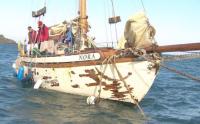 Two American sailors, Bob Weise and Steve Shapiro, both 71, have been attempting to sail across the Atlantic from Norway to Maine in a 40′ gaff rigged sloop named Nora. They began the attempt last July and it has not gone well. In the last seven months, they have been rescued nine times. In this case, persistence is not a virtue.
Two American sailors, Bob Weise and Steve Shapiro, both 71, have been attempting to sail across the Atlantic from Norway to Maine in a 40′ gaff rigged sloop named Nora. They began the attempt last July and it has not gone well. In the last seven months, they have been rescued nine times. In this case, persistence is not a virtue.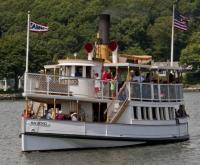 Yesterday,
Yesterday, 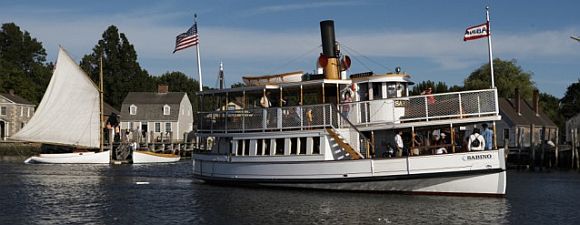 The
The 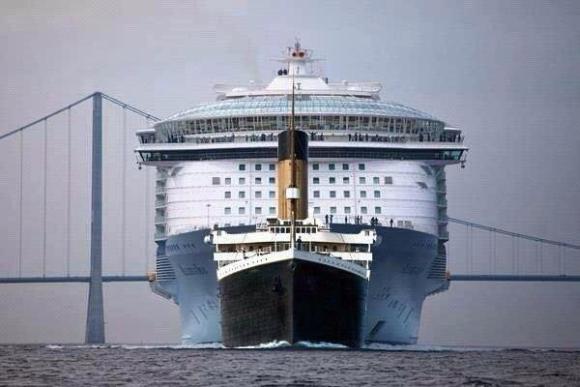 Numbers are fine but sometimes the best way to communicate scale is visually. The image above is what it would have looked like if the largest passenger liner of roughly 100 years ago,
Numbers are fine but sometimes the best way to communicate scale is visually. The image above is what it would have looked like if the largest passenger liner of roughly 100 years ago, 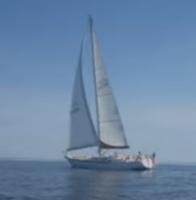 Here on the west bank of the Hudson River, I spent most of the morning digging out from yesterday’s blizzard, which dumped around 30 inches of snow on us. So, it seems like a good time to think of sunshine and warm breezes. The video, after the page break, is of an Albin Nimbus 42, named Sherry Dawn. This summer I hope to be sailing a sister vessel named Arcturus. Right now Arcturus, ex-Obsession, is being worked on by the good folks at
Here on the west bank of the Hudson River, I spent most of the morning digging out from yesterday’s blizzard, which dumped around 30 inches of snow on us. So, it seems like a good time to think of sunshine and warm breezes. The video, after the page break, is of an Albin Nimbus 42, named Sherry Dawn. This summer I hope to be sailing a sister vessel named Arcturus. Right now Arcturus, ex-Obsession, is being worked on by the good folks at  Anyone who may doubt that we live on a water planet or that what happens at sea has a huge impact for everyone, even those living far inland, need only look to this year’s
Anyone who may doubt that we live on a water planet or that what happens at sea has a huge impact for everyone, even those living far inland, need only look to this year’s